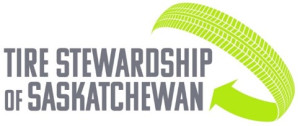Mission & Vision
The membership of CATRA (Canadian Association of Tire Recycling Agencies) is made up of tire recycling agencies in the provinces and territories of Canada.
CATRA’s mission is to enhance the effectiveness of each Member’s program through the sharing of information, expertise and resources. Its vision is a strong partnership that is committed to a clean environment by enhancing value for its Members and creating a sustainable, positive value for end-of-life tires in Canada.
To view CATRA’s current list of members, click here.
CATRA Annual Report 2024
TIRE RECYCLING IN CANADA
Globally, an estimated one billion tires reach the end of their useful lives every year. Management of scrap tires in environmentally sound and productive ways continues to be a high priority goal. Various efforts in all parts of the globe are currently underway to address the scrap tire issue and good progress is being made.
Recovery of end-of-life tires provides a cost-effective and environmentally sound energy for several industries, replacing traditional fossil fuels. It also provides innovative materials to replace other limited natural resources. In many parts of the world, burning recycled “shred” as Tire-Derived Fuel (TDF) is a common practice.
Canada’s geographic character and widespread population has prompted a more diverse approach over the years. Our collection systems and processing technology must be compatible with longer transportation distances, seasonal variations in volume, fewer concentrated urban areas, and smaller number of vehicles overall.
The level of cooperation and collaboration in Canada is truly unique. Growing public support for waste reduction throughout the country has helped to sharpen our focus on recovering and recycling as many resources as possible, from every scrap tire Canadians generate. The emphasis on finding new, value-added applications is expected to strengthen even further in the years ahead.
Shifts in program delivery
2018 saw the start of major changes in the end-of-life tire industry in Canada’s largest province, with new legislation implemented under Ontario’s Resource Recovery and Circular Economy Act, 2016 (RRCEA). The tire recycling program operating under the province’s former legislation ceased operations on December 31, 2018. In its place, multiple new organizations emerged to serve as Producer Responsibility Organizations (PROs) which submit documentation to Ontario’s Resource Productivity Recovery Authority (RPRA) to demonstrate compliance with regulations in place to implement the RRCEA. The list of registered PROs is available on the RPRA website.
Ontario’s new model may influence the face of tire recycling in Canada and CATRA is monitoring the impacts of this development.
It goes without saying that what goes onto a vehicle must eventually come off, and even more importantly, something must be done with it. When it comes to tires, that involves recycling, and that is CATRA's focus because we are the Canadian Association of Tire Recycling Agencies.
Measuring Canada’s performance
Tire Collection and Diversion Rate are the two metrics reported on CATRA’s website. Tire Collection represents the volume of regulated scrap tires (in tonnes) picked up from scrap tire generators under the recycling programs of CATRA members.
In using the Diversion Rate metric, it is CATRA’s assessment that all regulated scrap tires available for collection in Canada are being collected. This reflects that Canadian programs offer sufficient incentive to ensure that virtually all collectible tires are collected, as evidenced by the negligible complaints related to collection services.
The rate of diversion is therefore defined as the Tonnes of Tire Derived Products created + Tire Derived Fuel consumed, divided by the Tonnes of Scrap Tires Collected. While the Diversion Rate may fluctuate above or below 100% in any given year depending on the unprocessed inventories on hand, over time, the rate will generally average out at close to 100%.
CATRA does not use the Recovery Rate metric, defined as scrap tires collected divided by new tire sales, as it does not accurately reflect the effectiveness of scrap tire programs. For example:
- New tires sold are usually not recycled until several years later, and comparing to the current collection volumes is not pertinent without estimating several adjusting factors.
- Tire sales data is available only in the number of units sold (not in tonnes), so only estimates can be used for comparisons to collection.
- Some new tires sold will never enter the scrap tire market as some are exported or directed to other uses.
A Countrywide Effect
Recycling is not new but the number of people joining the effort to improve our use of natural resources and protect our environment grows each year. The success of Canada's tire programs is built on the willingness of people to do the right thing with their old tires. Those individual efforts may seem too small to count, but the reality is that whether you are a business or a DIY consumer, your efforts play a huge part in ensuring those scrap tires don't end up littered across our beautiful countryside.
Latest news
Read More...
Read More...

Read More...
